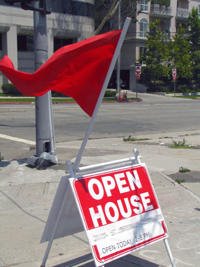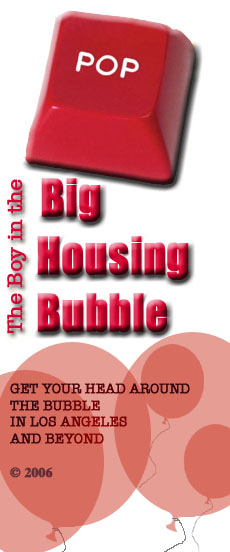Predicting The Big Bubble Pop
 Everybody's got a prediction.
Everybody's got a prediction.Weblog.Housing.Com, one of my favorite blogs, said boldly in a post Wednesday that it was "The Day The Bubble Died."
The Housing Bubble 2, another respectable yet text-heavy blog, had a post headlined "‘Buying Frenzy’ Is Over."
Then there's the joker who took the best bubble url on Blogger and never used it, a guy over at RealEstateBubble.Blogspot.Com. He calls himself SmartDesi, but he predicted that the bubble popped in May 2005.
Sorry Desi.
We won't know if the predictions pegging this month are correct for a long time, but we definitely know the market didn't peak in May 2005.
Seems a good time for a refresher for new readers who might be under the mistaken impression that there will be a headline in the newspaper one day that says "The Bubble Popped!" That kind of thinking works for the stock market, but not for the housing market. It all works like this. As posted here in August:
A lot of people seem to be of the impression that when the housing bubble pops, they will know immediately, as though there will be some instantaneous burst that will be featured on the evening's newscast with an announcer declaring "The housing bubble finally burst today at 11:02 a.m. Pacific Standard Time." But that's just not how it works.
Think of the bubble burst as being like the start of a drought in Southern California. At first you're just going to notice that it hasn't rained for a few months. Happens all the time here. Only after many months, or a year without rain can you know for sure that you're in a drought. And only then, in looking back over time, can you tell when a drought began. Determining where a housing bubble pops uses much the same approach.
Only after many months, or more than a year, will you be able to see when this housing bubble pops. Looking back you'll notice that houses started staying on the market longer, prices began dropping and inventory began swelling. Until then, we'll all keep watching the street corners for the silk flags to multiply.
— The Boy in the Big Housing Bubble




<< Home